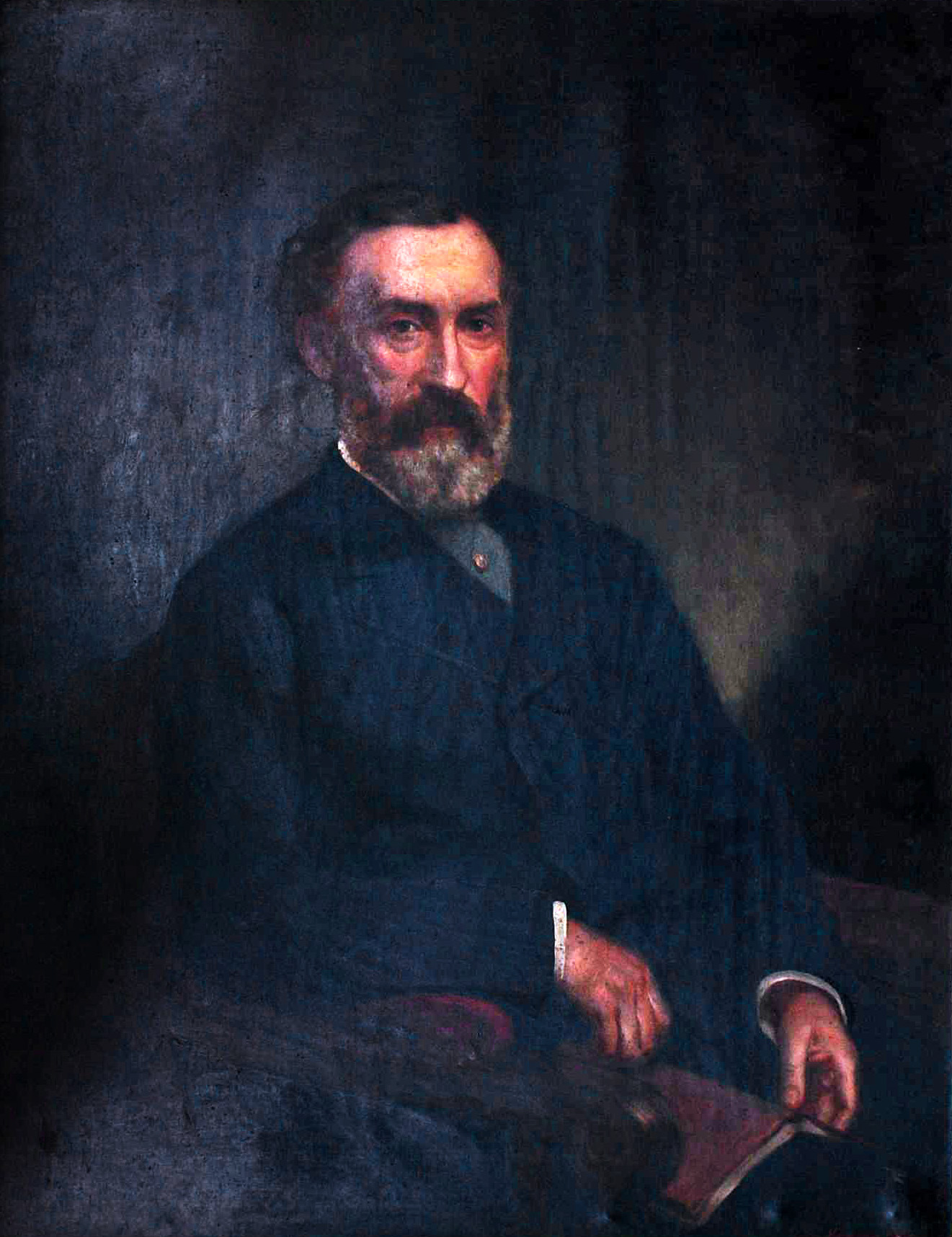John Reid is notable as owner of one of early Otago’s great landed estates, ‘Elderslie’ in North Otago. Reid was born near Stirling, Scotland, in 1835. He emigrated to Australia in 1853 and spent 10 years as an engineer near Ballarat on the Victorian goldfields. He married Agnes Humphries in Melbourne in 1856.
He crossed over to Otago in 1863 as the representative of various Victorian commercial firms. Two years later he began to buy up farm land in North Otago, quickly amassing a substantial property. He named his estate ‘Elderslie’ after the birthplace of Sir William Wallace (the great hero of the 13th-century Scottish wars of independence), demonstrating his Scottish patriotism. He took up residence there in the 1870s and developed its homestead into a showpiece park. As well as a large house and stables, there were ornamental gates framing a long driveway, lakelets, plantations of trees and exotic animals. In 1879 Reid purchased the neighbouring estate, ‘Balruddery’, doubling his holdings.
This expansion made Reid the largest freeholder in North Otago, running 33,000 sheep on his two estates. He worked hard on stock development and improving his pastures. Elderslie flocks won innumerable prizes, as did the estate’s horses which Reid bred for both work and racing. He was vitally involved in the development of refrigerated shipping as well, building a steamer Elderslie to trade directly between Britain and Oamaru. Its inaugural voyage in 1884 carried 23,000 frozen carcasses and was a great success. Lack of support from fellow landowners disappointed Reid and he was not able to restrict the ship’s trading to Oamaru as he had hoped. Reid represents the great landed interest who were so important in 19th-century Otago before the Liberals ‘burst up’ their great estates.
By the turn of the 20th century, the age of the great estate owners was passing. In 1900 Reid sold over 11,000 to the government and in 1908 Balruddery was also sold for closer subdivision. In 1912 another 1,800 acres of Elderslie went the same way. John Reid died that year, leaving a widow and twelve children.
Reid had made a great contribution to the development of North Otago. He had been president of the Agricultural and Pastoral Association and the Acclimatisation Society, a director of the Oamaru Woollen Factory, chairman of the road board and numerous other public bodies. But he could never win enough votes to win a seat in parliament, nor on the Waitaki County Council. North Otago voters seemed wary of adding political power to Reid’s economic and social dominance. His great house at Elderslie was destroyed by fire in 1957 and small family farms have long occupied the land where he once held sway as the local nabob.

John Reid